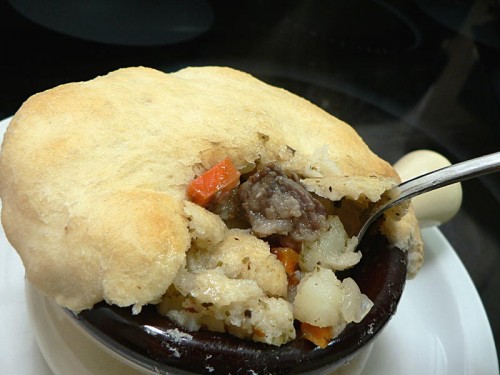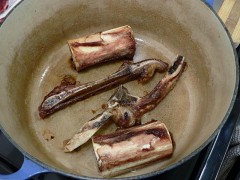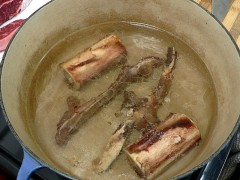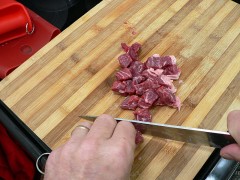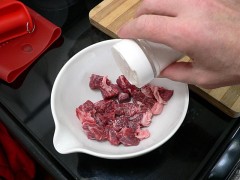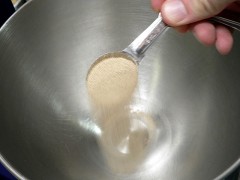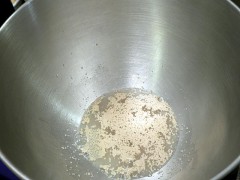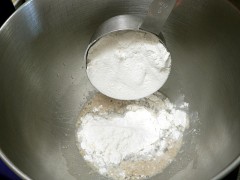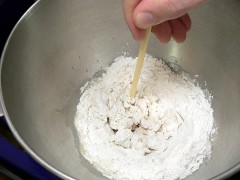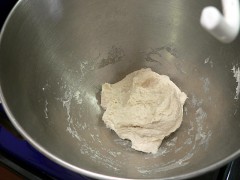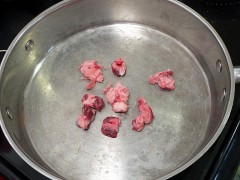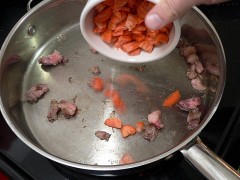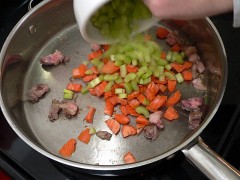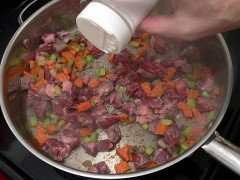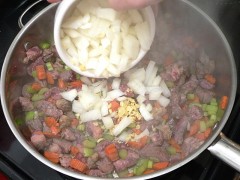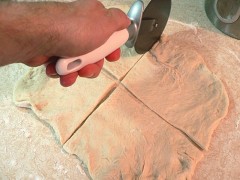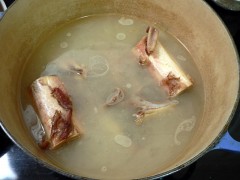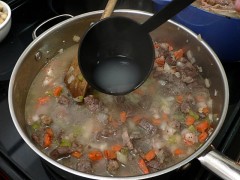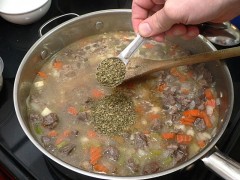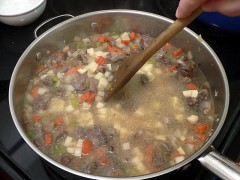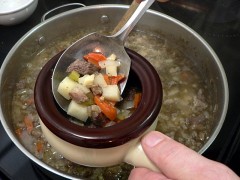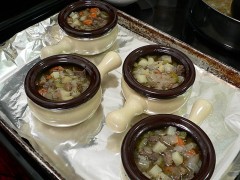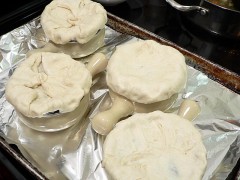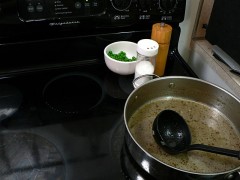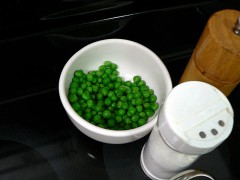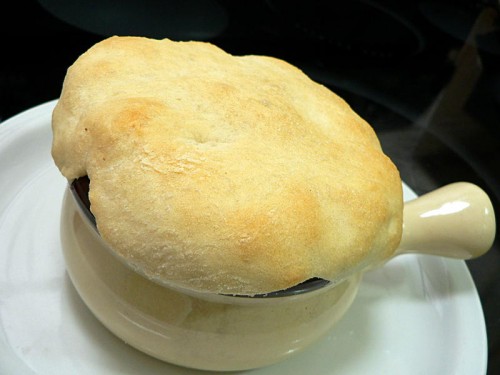When we did the chicken pot pie recipe, Kelly told me she has a relative who can’t eat poultry, and could we do a beef version. It’s definitely soup season in Cleveland, so I thought that was a fine idea.
Just to change it up, though, I decided to go with a yeast bread crust instead of a pie-style crust. Based on a survey of the family it’s unanimous: They’re both great.
Ingredients
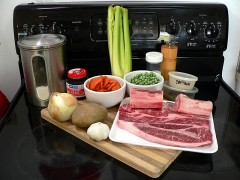 beef chuck steak – 1½ pounds
beef chuck steak – 1½ pounds
2 beef soup bones
1 cup chopped carrots
2 stalks celery
1 medium onion
3-5 cloves garlic
1 medium russet potato
1 cup peas (optional – see below)
1 cup flour
1 teaspoon dry yeast
1 teaspoon cardamom
2 teaspoons marjoram
salt and pepper
Directions
I’m not going to lie and pretend this is a quick one. The beef broth is from scratch, there’s a bunch of veggies to chop, steak to trim and chop, dough to make … I’ll say this, though: The house smells amazing. All day, whenever someone came in from outside they asked what I was working on and when it was going to be ready.
So let’s get started.
The broth
Start by roasting the soup bones. Put them in a heavy-bottom pot – a dutch oven is perfect – in a 450° oven, uncovered.
This is enough for beef broth, but since I’ve got some bones in the chuck steak I figured I’d add those, too. So I trimmed them out and tossed them in.
Go work on something else for about a half-hour. The bones should have picked up some nice color, and it will already be smelling pretty good.
Cover with water, put a lid on and put it back in the oven, turned down to 300°.
Prepping the soup
While the broth is simmering, dice up all the veggies and set them aside.
Chop the steak into bite-size pieces. Set aside any large pieces of fat.
Salt each layer of the steak as you set it in a bowl.
Starting the dough
Combine the yeast, a half-cup of warm water (between 105° and 115° F.), a cup of flour and stir.
Beat on high speed for a few minutes, or knead by hand on a floured surface until smooth and stretchy.
Let it rest for about 10 minutes to make sure the yeast is active. You should see the dough starting to rise. Add a teaspoon of salt and beat/knead again until smooth and it pulls away from the sides of the bowl.
Put the dough in a lightly-oiled bowl and set aside somewhere warm while you work on the rest.
Assembling the soup
Remember those pieces of fat you trimmed off a few steps back? Put them in a heavy-bottom frying pan over high heat.
Once they’ve started to give up enough grease to coat the bottom of the pan, add the carrots and celery.
Stir them over high heat for a few minutes until they start to soften, then add the steak and season with salt and pepper.
Add the onion and garlic and turn the heat down low.
Stir over low heat until the steak is well browned and the veggies are softened.
Final assembly
Make sure you won’t be interrupted for the next 15-20 minutes. You’re going to have a lot going on at the same time. (This is not foreshadowing.*)
Turn the dough out onto a floured surface. Stretch it out and divide into four equal pieces.
Take the broth out of the oven and, using a ladle, transfer the liquid into the pan.
Add the potatoes, cardamom, and marjoram and stir.
The bones that are left? Your dog will love them.
NOTE: Mary pointed out down in the comments that cooked bones can splinter, causing a choking hazard for your dog. I’ve given rib bones from a roast before and never had a problem. This is the first time I’ve given bones from broth, and the one from the chuck steak did splinter. The soup bones will probably be OK, but I won’t be giving her the other steak bone. And I’ll be keeping a close eye on her until I’m confident she can’t break the bigger ones.
Divide the soup evenly among four bowls.
One by one, take a piece of dough, fold the corners under, place on top of a bowl, and pinch it down to the rim.
Now if you look close at that picture (or click on it to see the larger view) you’ll notice that two of them look like the corners were folded up. Yeah, I wasn’t sure which way would work better. Definitely folding under.
Put the baking sheet — oh yeah, put all the bowls on a baking sheet covered with a piece of foil — in a 400° oven.
Now this next step, the timing is absolutely critical. After you put the baking sheet with those tightly-sealed bowls on it into the stove, start cleaning up. Look back at the stove-top and … what is that back in the corner?
Oh hey, that looks like …
… yup, it’s the peas.
Spend the next five minutes saying so many bad words that you suspect you invented some new ones. Remember back when I said to make sure you weren’t interrupted? Remember when I said that was not foreshadowing? I lie … badly.
Check on them after about 15 minutes. They’re done when the crust is golden brown.
Be careful of steam venting out from under the bread.
You can either break up the bread and shove it in, or rip pieces off and dip it like a roll.
And that’s it.
* That was foreshadowing.
